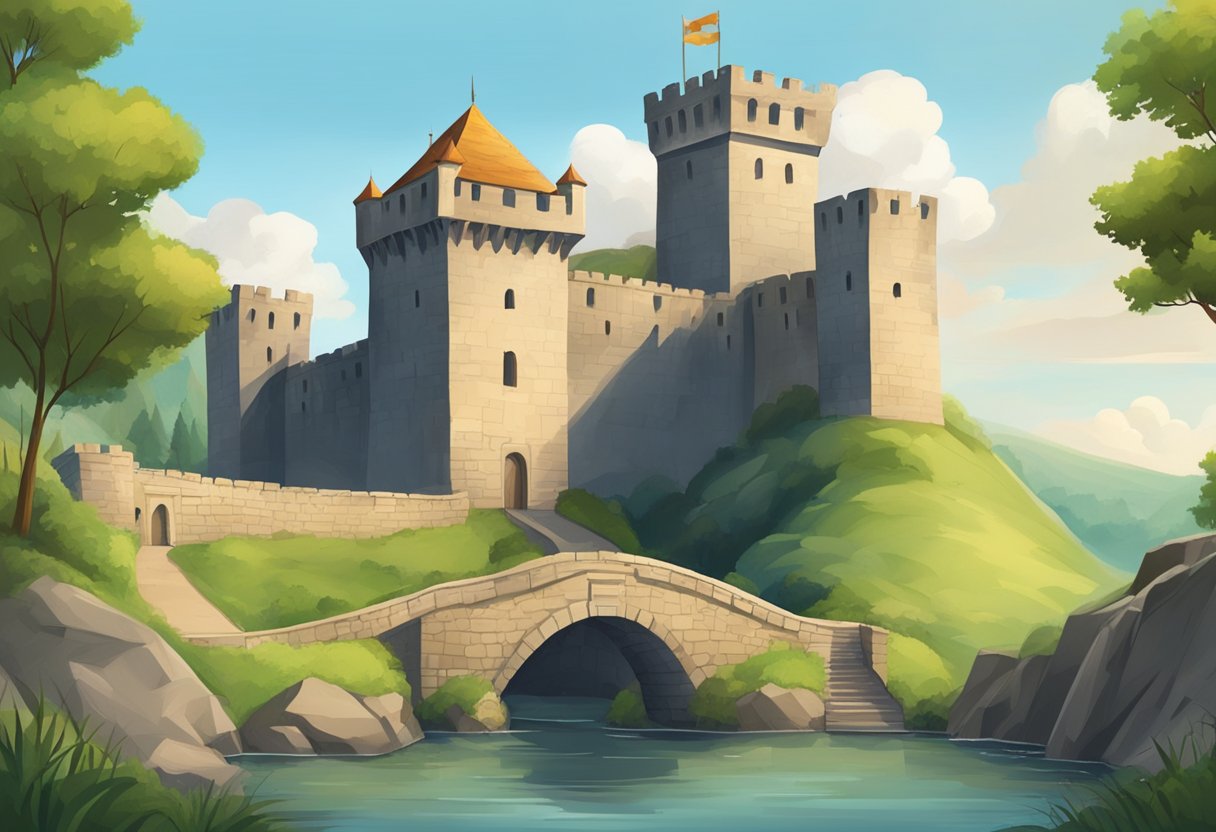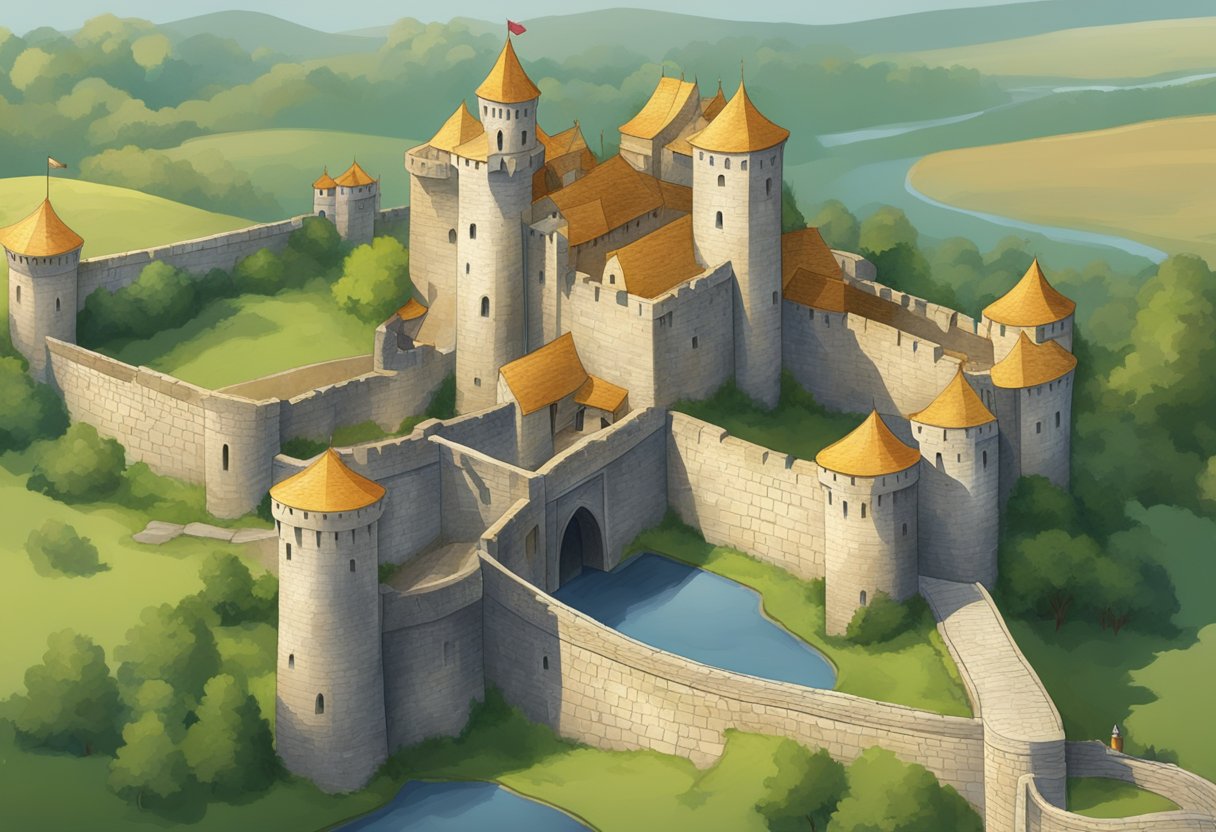The notion that castles are inherently medieval is rooted deeply in the popular imagination. Thanks largely to films, books, and not-so-accurate Halloween costumes, the very word ‘castle’ conjures images of towering stone fortresses, complete with moats, drawbridges, and the occasional dragon. It’s true that the heyday of castle construction and use falls squarely within what we call the Middle Ages, a period spanning approximately from the 5th to the 15th century. During this time, castles dotted the European landscape, serving as both imposing fortresses and ostentatious homes for nobility.

Understanding castles involves peering over the ramparts to see the surprisingly diverse functions they played. Far from being just fortified strongholds, castles were the epicenters of social life and symbols of power. Life inside was more than enduring sieges and polishing armor; it involved running a household, holding court, and often looking down from the battlements at the bustling life of the town below. The walls of these stone behemoths weren’t just for keeping people out – they stood as a constant reminder of who was in charge, a physical manifestation of feudal power and prestige.
Key Takeaways
- Castles are emblematic of the Medieval Period, yet their roles extended beyond military defense.
- The social dynamic within castle walls was complex, integrating household management and societal functions.
- Castles symbolized power and played a key role in the feudal hierarchy during the Middle Ages.
The Nuts and Bolts of Medieval Fortresses
https://www.youtube.com/watch?v=qtHNLy4ktvg&embed=true
In the tapestry of medieval history, castles stand out with their robust construction and strategic designs, daring raiders to attempt a breach. These stalwart fortifications were far more than mere residences; they were the power symbols of their era.
Sturdy Walls and Towers
- Constructive Materials: Predominantly made from stone, the walls of medieval castles were designed to withstand sieges and attacks. The use of stone also afforded a certain aesthetic appeal, reflecting sunlight in a way that probably made rival lords green with envy.
- Strategic Height: Towers erupted from the ground like petrified giants, enabling archers to rain arrows upon foes with a grandeur matched only by their impressive altitude.
Motte and Bailey: The Castle Ancestor
Before stone fortresses dominated the landscape, wooden structures perched atop hills like vigilant hawks. The motte and bailey castles were the rudimentary, yet clever, precursors to their more robust successors. Constructed primarily from wood, these forts combined a hill (motte) with a defended courtyard (bailey), like some ancient flat-pack assembly from a giant’s IKEA.
Inner Keep: The Power Tower
Here is where the magic happened – the inner keep was the fortified nucleus of the castle, standing tall and proud as if it drank too much confidence potion. This structure served as the stronghold within the stronghold, where the lord would keep his treasures, his family, and presumably, his collection of medieval memes.
| Features of the Keep | |
|---|---|
| Material | Primarily stone, suitable for outlasting centuries and boastful ballads. |
| Design | A maze of rooms and passages, because who doesn’t love a good game of medieval hide-and-seek? |
| Structure | Multi-storied, offering panoramic views to gaze upon the kingdom or glare at approaching in-laws. |
Humor aside, these components of medieval castle design reflect the intricate and thoughtful architecture that has allowed many castles to stand the test of time and history’s tempests.
Castle Life: More Than Just Siege Salad
https://www.youtube.com/watch?v=V-xtGCVBXqU&embed=true
The domestic hustle and bustle of castle life involved far more than preparing for enemy attacks. It was a complex ecosystem involving both the lavish lifestyles of the nobility and the rigorous toil of the servants.
Noble Living Quarters
In the noble living quarters, one would find the epitome of medieval luxury. Kings and nobles slept in opulent bedrooms, nestled among fine linens with imposing four-poster beds as the centerpiece. The great hall was not just a status symbol of wealth; it doubled as a showroom for ostentatious furniture and roaring fireplaces aimed at keeping the comfort level just shy of ‘spoiled rotten.’
- Bedroom Decors:
- Canopy beds
- Embroidered tapestries
- Velvet drapes galore
Servants’ Backstage
Meanwhile, the servants orchestrated their tireless daily life backstage, navigating a complex labyrinth of hallways and backdoors that would befuddle any visiting nobleman. The behind-the-scenes kitchen was their domain, where large ovens and prep tables were as essential as a sense of urgency and a resistance to heat.
- Servant Must-Haves:
- Callouses (from all that scrubbing)
- Secret knowledge of the hallway shortcuts
Feasts and Famine: The Dining Spectrum
The dining experience ranged from extravagant feasts capable of feeding an army of appetites to the frugal but practical nibbles during less prosperous times. Food in the great hall wasn’t just sustenance; it was a statement. Imposing tables welcomed guests with an array of dishes that would have made today’s food bloggers go parchment-pale with envy.
| State of Affairs | Feast Wares | Famine Fare |
|---|---|---|
| Prosperous Times | A parade of roasted swans | Porridge |
| Leaner Days | Last year’s salted pork | Hope and hardtack |
| Celebrations | Mead by the barrel | Watered-down wine |
| Daily Bread | Enough bread to build a fort | Whatever’s not moldy |
So whether one was a noble feasting in the great hall or a servant sneaking a crust of bread, castle life presented a spectrum of experiences bound by the stone walls and social hierarchy.
Marathon of Sieges: The Art of Defense
https://www.youtube.com/watch?v=xMizFQljO2E&embed=true
Tomfoolery has no place in the serious business of medieval fortifications. Castles in the Middle Ages were heavily fortified strongholds designed to withstand lengthy sieges, not just the occasional stray cow hurtling over the walls.
Castle Defenses: Not Your Average Fencing
Medieval architects had a flair for the dramatic, with castle defenses being anything but ordinary. Consider the mighty fortress, surrounded by a complex network of walls, towers, and gatehouses, each feature serving a specific purpose in keeping out the rabble. To put it simply:
- Walls: Not your average picket fence. They were thick, tall, and often topped with murder holes for pouring boiling oil on unwelcome guests.
- Towers: High points perfect for archers to unleash a storm of arrows, survey the land, and perhaps spot the ice-cream cart that never seems to visit.
- Gatehouses: Fortified entrances with portcullises and doors so hefty they’d make a bodybuilder weep. Once inside, invaders met with a delightful surprise: the inner bailey, where defenders could launch a counter-attack.
Castles were like the Swiss Army knife of defense; every feature had a purpose, often several, like a lounge that turns into a guest room but with more arrow slits and fewer futons.
Moat: More Than Just a Water Feature
Don’t let the ducks fool you, the moat was less about aesthetics and more about defense. A good moat acted like a security system and a stinky trench all wrapped in one. Some fascinating points:
- Depth: Deep enough to deter any enthusiastic swimmers with full armor.
- Inhabitants: Often home to a moody collection of creatures that took a dim view of being disturbed.
- Drawbridge: The doorbell of the medieval world. When that baby was up, visitors knew they weren’t getting in without an appointment.
One could argue that the moat was the medieval castle’s equivalent of a “Beware of the Dog” sign, except the dog was a giant pit of water and possibly some very irritable fish.
To sum it up, castles had more layers than an onion wearing a winter coat. They were a testament to the medieval mastery of “keep out” signs made in stone, soil, water, and wood.
Society and Symbolism: The High Walls Talk

As silent as they stand, the high walls of medieval castles are loud with stories of grandeur and piety. They whisper tales of power and devotion that unfolded within their imposing embrace.
Castles as Beacons of Power and Wealth
Medieval castles weren’t just cozy homes for the royalty; they were like giant billboards, boasting about the wealth and influence of their inhabitants. Lords and ladies pranced around in these stone beasts, making sure every serf for miles knew who was boss.
- Visibility: Castles were often on high ground, screaming, “Look at me!”
- Construction: Big, extravagant castles meant more coins jingling in the royal pouch.
- Architecture: The grander the design, the louder the message: a symphony of status and power.
- Defense: Those walls weren’t just pretty faces; they were beefy bouncers keeping out unwanted guests.
Religious Functions: Chapel or Party Room?
Every castle worth its salt had a chapel, but let’s be real, they were more than prayer rooms. The chapels hosted some swanky soirees that gave the local tavern’s weekly bingo night a run for its money.
- Dual roles: By day, a venue for religious services; by night, perhaps a site for less holy happenings.
- Social hotspots: The chapels were the medieval equivalent of VIP lounges, where knights and lords flexed their piety muscles.


Leave a Reply